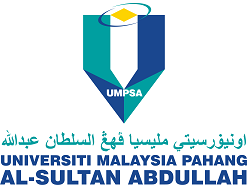Response Surface Methodology Approaches in Producing Amorphous Silica from Rice Straw Ash
DOI:
https://doi.org/10.15282/construction.v3i2.9685Keywords:
Rice Straw Ash, Pretreatment Process, Response Surface Methodology, Central Composite Design, Analysis of VarianceAbstract
A large amount of rice straw is produced as crop residue from rice production as an underutilization waste material. The open burning of rice straw can lead to environmental pollution by forming an abundant amount of rice straw ash (RSA) and exposing harmful gases to the atmosphere. Thus, RSA can be used as a cement replacement material due to its high amount of silica. Silica is a helpful additive to cement mix by accelerating the hydration process of cement because of its high reactivity and improving mortar performance. This study focuses amount of high silica of RSA in modified concrete through thermochemical pretreatment via response surface methodology (RSM). The factors involved in the pretreatment of RSA are 0.01M – 0.1M HCl hydrochloric acid, 1 – 3 hours soaking duration, and 60 - 80℃ soaking temperature, and a response is the percentage of reactive compound content (SiO2, Al2O3, and Fe2O3). Therefore, central composite design (CCD) in the RSM and the analysis of variance (ANOVA) have been used to evaluate the interaction between the factors and response, then simulated and further assess the accuracy of the model to achieve the accurate prediction. As a result, RSM observed that the optimum silica amount in the treated RSA (98.34%) was produced using parameters of 0.06 M HCl, 2 hours of soaking duration, and 70℃ soaking temperature in the pretreatment process. After that, it is followed by a burning process at a controlled temperature and a grinding process to produce treated RSA. The prediction given by the RSM was not the sole result but was proved through X-Ray Fluorescence (XRF) analysis. The result of XRF analysis obtained for each model with the same value of each factor (HCl concentration = 0.06 M, soaking duration = 2 hours, and soaking temperature = 70℃) is more than 97.00% and falls between the prediction index range. Thus, the model is validated since the actual experimental result is within the expected range for any involved factor. Hence, the treated RSA was considered a high-quality pozzolanic material incorporated in the mortar production.
Downloads
Downloads
Published
Issue
Section
License
Copyright (c) 2023 The Author(s)

This work is licensed under a Creative Commons Attribution-NonCommercial 4.0 International License.




